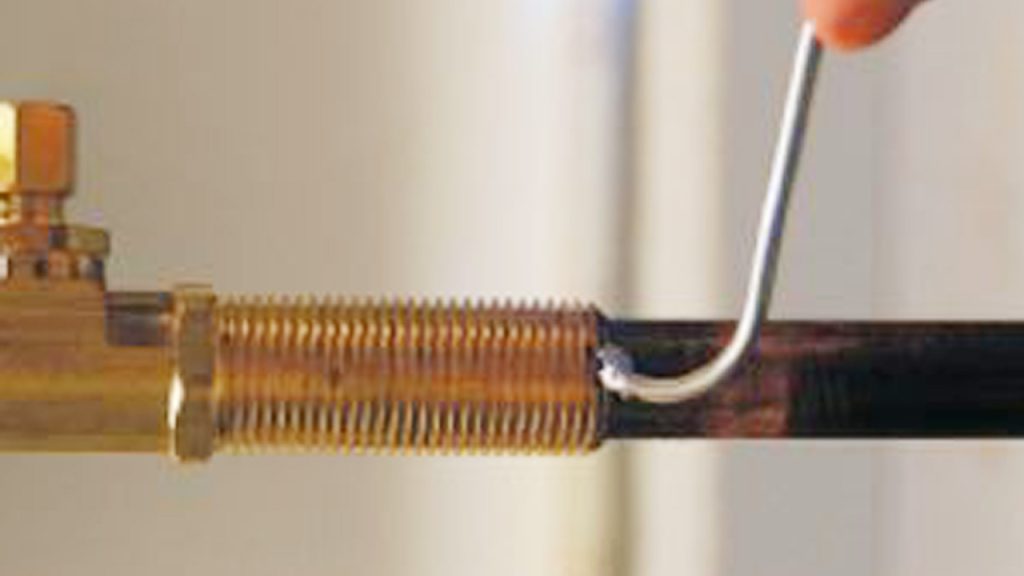When I first started welding, tackling aluminum and copper felt like venturing into uncharted territory. Both materials have unique properties that make them challenging to weld but equally rewarding once you master the process. Through trial and error, and a lot of guidance from experts, I’ve learned how to approach these metals with confidence.

Image by chinahhowelder
If you’re looking to weld aluminum and copper, you’ve come to the right place. In this guide, I’ll break down everything you need to know to get started, from the basics to advanced tips. Welding these two metals requires precision, the right equipment, and a solid understanding of their characteristics. Let’s dive into it!
Challenges of Welding Aluminum and Copper
Before jumping into the process, it’s essential to understand why welding aluminum and copper is different from welding steel or other common metals. Both materials have unique characteristics that require special attention.
Aluminum’s Challenges
- High Thermal Conductivity: Aluminum dissipates heat quickly, making it tricky to maintain a stable weld pool.
- Oxide Layer: Aluminum forms an oxide layer on its surface that melts at a higher temperature than the base metal. This can lead to inconsistent welds if not properly addressed.
- Soft and Lightweight: Aluminum is prone to warping, which requires careful heat management.
Copper’s Challenges
- Exceptional Thermal Conductivity: Copper absorbs heat rapidly, which can make it difficult to reach the required temperature for welding.
- Oxidation: Like aluminum, copper oxidizes quickly when exposed to air, impacting the quality of the weld.
- High Melting Point: Copper’s high melting point demands more energy during welding, often requiring specialized equipment.
Understanding these challenges will help you prepare better and avoid common mistakes when welding these metals.
Tools and Equipment for Welding Aluminum and Copper
Having the right tools can make or break your welding project. Here’s a quick checklist of what you’ll need:
For Aluminum Welding
- Welding Machine: AC TIG (Tungsten Inert Gas) welders are the preferred choice for aluminum because of their precision and ability to handle the oxide layer.
- Electrodes: Use pure tungsten or zirconiated tungsten electrodes for aluminum welding.
- Shielding Gas: Argon is commonly used to protect the weld from atmospheric contamination.
- Filler Rods: Match the filler rod to the aluminum alloy being welded. Common options include 4045 or 5356 filler rods.
For Copper Welding
- Welding Machine: TIG or MIG (Metal Inert Gas) welders work well with copper. In some cases, oxy-acetylene welding is also suitable.
- Electrodes: Thoriated tungsten electrodes are ideal for copper due to their ability to handle higher heat.
- Shielding Gas: Argon or a mix of argon and helium can be used for copper welding. Helium enhances penetration for thicker materials.
- Filler Rods: Deoxidized copper filler rods are recommended to reduce porosity in the weld.
How to Weld Aluminum
Welding aluminum requires precision and attention to detail. Here’s how you can achieve a strong, reliable weld:
Prepare the Surface
Aluminum’s oxide layer can interfere with the welding process, so it’s crucial to clean the surface thoroughly. Use a stainless steel wire brush to remove the oxide layer, and wipe the surface with acetone to eliminate any grease or oil.
Set Up Your Welder
Adjust your AC TIG welder to the correct settings based on the thickness of the aluminum. Use high-frequency start for a smooth arc and ensure your shielding gas flow is steady.
Practice Heat Management
Since aluminum dissipates heat quickly, preheating the metal slightly (to around 300°F) can help maintain a consistent weld pool. Avoid overheating, as it can cause warping.
Begin Welding
Hold the torch at a 70–80-degree angle and maintain a steady arc. Add filler rod as needed while moving at a consistent speed. Pay close attention to the weld pool to avoid burning through the material.
How to Weld Copper
Copper welding is slightly more challenging due to its thermal properties, but with the right approach, it’s manageable.
Clean the Surface
Copper oxidizes quickly, so cleaning is essential. Use a wire brush or sandpaper to remove oxidation, and clean the surface with alcohol or acetone to eliminate contaminants.
Preheat the Material
For thicker copper pieces, preheating is a must. Heat the copper to around 500–600°F to reduce the risk of cracking and ensure better weld penetration.
Adjust Your Welder
Set your TIG welder to DC mode for copper and use a helium-argon gas mix for better heat transfer. Thoriated tungsten electrodes work best for the high heat required.
Start Welding
Maintain a tight arc and move steadily across the joint. Add filler material as needed, ensuring you achieve good fusion between the base metals. Copper requires more heat, so be prepared to use higher amperage settings.
Tips for Welding Aluminum to Copper
Welding aluminum directly to copper is one of the most challenging tasks due to their differing properties, like melting points and thermal conductivity. However, it’s possible with the right techniques.
Use a Transition Material
One of the best ways to join aluminum and copper is by using a bimetallic transition insert. This acts as an intermediary layer, reducing the risk of cracking and ensuring a strong bond.
Brazing
If welding is too difficult, brazing is an alternative method for joining aluminum and copper. Use a suitable flux and filler material designed for both metals.
Control Heat Carefully
Because aluminum melts at a lower temperature than copper, you need to manage heat input precisely to avoid overheating the aluminum while still achieving fusion with the copper.
Common Mistakes to Avoid
When I was learning how to weld aluminum and copper, I made plenty of mistakes. Here are some of the most common ones to watch out for:
Skipping Surface Preparation: Always clean the metal surfaces thoroughly to avoid oxidation and contamination.
Using the Wrong Filler Material: Match the filler material to the base metal to ensure a strong, reliable joint.
Inconsistent Heat Management: Both aluminum and copper require precise heat control to prevent warping, burn-through, or weak welds.
Insufficient Shielding Gas Coverage: Always double-check your gas flow to protect the weld pool from contamination.
Conclusion
Welding aluminum and copper can seem intimidating at first, but with the right knowledge and practice, it’s entirely achievable. Both metals have unique challenges, but understanding their properties and using proper techniques will help you create strong, professional welds.
Whether you’re welding aluminum for lightweight structures or copper for electrical applications, preparation and precision are key. Take your time to master the basics, and don’t be afraid to experiment with different settings and tools to find what works best for you.
By following the tips and techniques outlined in this guide, you’ll be well on your way to tackling aluminum and copper welding like a pro.
FAQs
Can I weld aluminum directly to copper?
Welding aluminum to copper is challenging due to their different properties. Using a bimetallic transition insert or brazing is often more effective.
What type of welder is best for aluminum?
AC TIG welders are ideal for aluminum welding because they handle the oxide layer effectively and provide precise control.
Why is preheating important for copper welding?
Preheating reduces the risk of cracking and ensures better weld penetration by compensating for copper’s high thermal conductivity.
What shielding gas should I use for aluminum?
Argon is commonly used as a shielding gas for aluminum welding.
How do I avoid warping when welding aluminum?
Control heat input carefully and consider preheating the material to maintain a consistent weld pool.

Endow Russel the owner chief editor of giftendow.com . I am a mechanical engineer and assign to an local firm with much experience in welding and industrial equipment.

